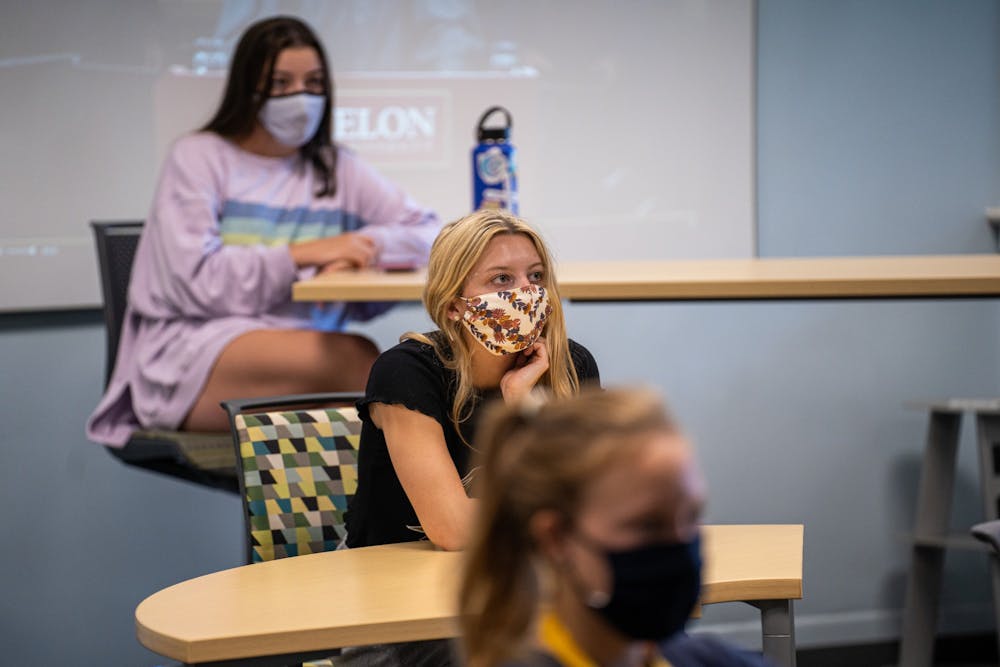Updated Sept. 20, 2020, at 8:25 p.m. to include concerns of an additional professor.
Elon University professors are uncertain whether or not to move their classes online after the university moved to the level 2 alert due to the latest increase of positive COVID-19 cases on campus.
According to Director Elon University News Bureau Owen Covington, professors already have the option to choose what method of instruction best suits their needs, but more are considering shifting their curriculum to an online setting starting next week.
"Individual faculty members still have the ability to determine what method of instruction is most effective and safest for their own courses," Covington wrote.
Faculty had the option over the summer to request accommodations for instruction. In an Aug. 11 email to faculty members clarifying the instruction process, Provost Aswani Volety wrote that classes this fall are "predominately face-to-face/hybrid and synchronous," but says "face-to-face may not always be possible or most effective."
According to Covington, no faculty is required to shift their classes online because of the moderate alert level.
“At this time, the Ready & Resilient Committee has not recommended any changes to academic instruction,” Covington wrote.
Associate Professor of Communication Design Ben Hannam said he submitted a request to move his class online before Level 2 was announced, and he’s concerned about what classes will look like moving forward.
“I hope that there are quick reactions when there need[s] to be,” Hannam said. “It's that lag that makes you just like, not sure what to do when we hit [next alert levels] and we need to make the next move. It needs to be immediate, instantaneous.”
Associate Professor of Strategic Communications Jessalynn Strauss said she wants more guidance on what to do with her classes, citing the only way to limit exposure is to move her in-person classes remote.
“I feel like one of the things that I have taken into [account] this semester is it's better to be proactive than reactive.” Strauss said. “I didn't want to wait until we had an outbreak to do things that would help prevent an outbreak.”
Strauss also said she’s seen a drop in optimism from her students.
“I do wonder if everybody's kind of reaching a bit of a frazzle point right now with what's going on,” Strauss said. “I think that as time went on and maybe like I said, we were all just waiting for the other shoe to drop.”
The Alamance County Health Department reported two new clusters to the state amongst the baseball and lacrosse teams Friday, according to an email sent by Vice President for Student Life Jon Dooley.
The university reported 32 new cases of the coronavirus Friday, and 67 total since Monday. Out of those 67, 43 student-athletes tested positive for the virus.
A cluster in an educational community setting is a minimum of five cases within a 14-day period and reasonable exposure linkage between cases, according to the North Carolina Department of Health and Human Services.
The university guidelines on the Ready & Resilient website advises a move to Level 2 if there are 10 to 20 cases in the last seven days.
According to the university alert levels guide, the moderate alert level continues classes primarily in-person, but also in hybrid learning. It says some classes may rely more on remote instruction if too many students or their instructor are in quarantine.
The alert model says the university will “implement limits on-campus activities and events” to help the spread.


